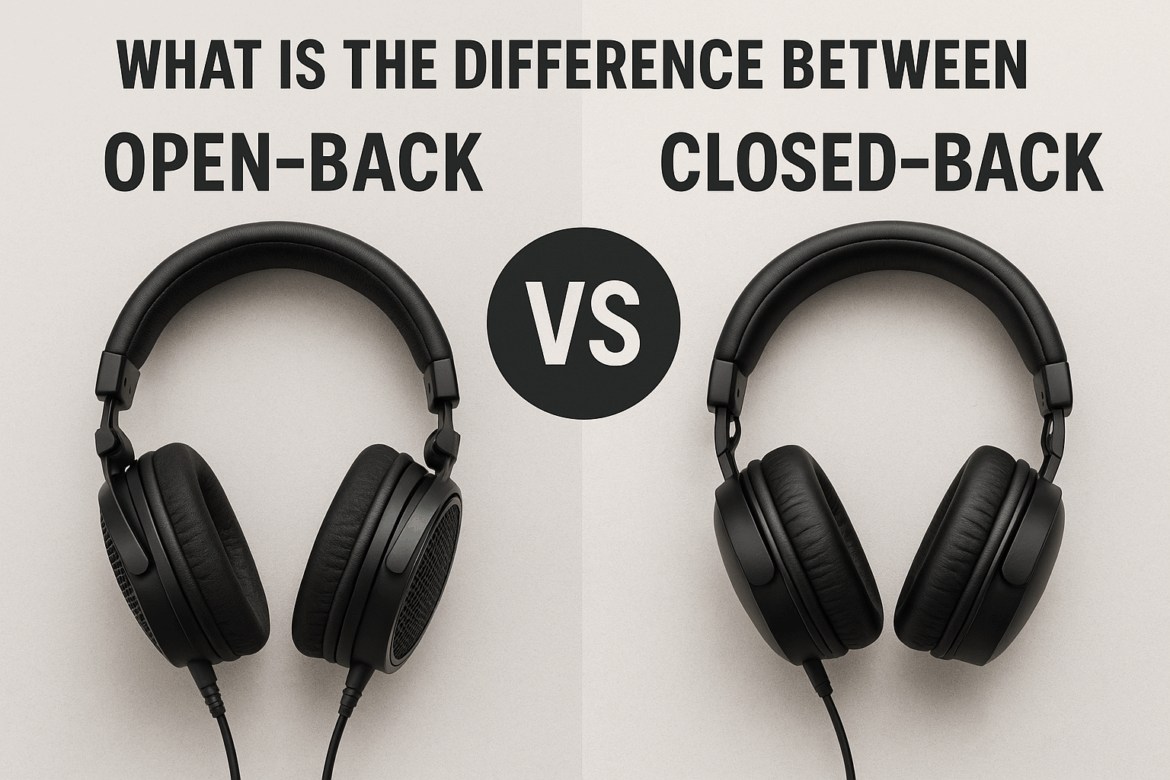What is the Difference Between Open-Back and Closed-Back Headphones?
In the realm of audio equipment, headphones are a staple for audiophiles, casual listeners, and professionals alike. Yet, the choice between open-back and closed-back headphones can be daunting. Understanding the differences between these two types can significantly enhance your auditory experience, whether you’re mixing tracks in a studio or simply enjoying your favorite tunes. Let’s embark on a journey to uncover the nuances that set these headphones apart.
Understanding Headphone Design
To appreciate the differences, we must first understand the fundamental designs of open-back and closed-back headphones. This knowledge will guide you through their unique characteristics and help you make an informed decision.
Open-Back Headphones: An Open-Air Experience
Open-back headphones are designed with ventilated ear cups that allow air and sound to pass freely. This design choice profoundly affects the listening experience.
1. Natural Sound Reproduction
Open-back headphones excel in providing a natural and spacious sound. The open design allows sound waves to interact with the environment, creating a sense of space akin to listening to speakers in a room. This quality makes them a favorite among audiophiles and music producers who value accuracy and depth in audio reproduction.
2. Breathability and Comfort
The open structure not only enhances sound quality but also improves comfort. The airflow through the ear cups prevents heat build-up, making them more comfortable for extended use. They’re ideal for long listening sessions, whether you’re analyzing music or simply unwinding with a podcast.
3. Ambient Sound Awareness
However, this design also allows ambient noise to seep in, which can be a double-edged sword. While it provides a more immersive experience, it also means you might not want to use open-back headphones in noisy environments or places where privacy is a concern.
Closed-Back Headphones: A Sound-Isolated Sanctuary
Closed-back headphones, in contrast, have sealed ear cups that isolate the listener from the external environment. This design has its own set of advantages.
1. Superior Noise Isolation
The sealed design of closed-back headphones effectively blocks out external noise, creating an isolated listening environment. This feature is essential for studio recording, where unwanted noise can interfere with audio capture. It’s also beneficial for commuters or anyone in a noisy setting seeking a personal audio oasis.
2. Enhanced Bass Response
Closed-back headphones often deliver a more pronounced bass response. The sealed ear cups trap sound waves, allowing for a more impactful low-frequency experience. This makes them popular among bass enthusiasts and fans of genres where deep bass is prominent, such as electronic or hip-hop music.
3. Privacy and Focus
With closed-back headphones, you can enjoy your music without disturbing others. This privacy aspect makes them suitable for office environments or libraries. The focused listening experience also aids in concentration, making them a favorite for those who prefer an immersive auditory escape while working or studying.
Comparison Table: Open-Back vs Closed-Back Headphones
| Feature | Open-Back Headphones | Closed-Back Headphones |
|---|---|---|
| Soundstage | Wide and natural | Narrower and more intimate |
| Noise Isolation | Minimal | Excellent |
| Bass Response | Balanced, less pronounced | Enhanced, more impactful |
| Comfort | High, due to airflow | Moderate, can be warm over time |
| Ideal Use | Home, studio monitoring | Public spaces, recording, commuting |
| Ambient Sound Awareness | High | Low |
| Privacy | Low | High |
Choosing the Right Headphones for Your Needs
The choice between open-back and closed-back headphones ultimately depends on your specific needs and preferences. Here are some factors to consider:
1. Environment and Usage
Consider where you’ll primarily use your headphones. If you’re often in quiet environments and prioritize sound quality, open-back headphones might be your go-to. For noisy environments or situations requiring privacy, closed-back headphones are more suitable.
2. Audio Preference
Your music taste can also influence your choice. If you enjoy genres with rich, deep bass, closed-back headphones could enhance your listening experience. Conversely, if you value a natural soundstage and clarity, open-back headphones might be more appealing.
3. Professional Needs
Professionals in the audio industry often require both types. Open-back headphones are excellent for mixing and mastering due to their accurate sound reproduction. Closed-back headphones are indispensable for recording sessions, where noise isolation is crucial.
Conclusion: Embracing Your Audio Journey
The journey to discovering the perfect pair of headphones is as personal as it is technical. Both open-back and closed-back headphones offer unique advantages that cater to different listening preferences and environments. Whether you choose the airy openness of an open-back design or the intimate isolation of closed-back headphones, understanding these differences empowers you to elevate your auditory experience.
Remember, the world of sound is a vast and rich landscape waiting to be explored. By choosing the right headphones, you are not just purchasing a product; you’re investing in countless sonic adventures. As you navigate this exciting realm, may your choice resonate with your personal tastes and auditory aspirations.
In summary, both open-back and closed-back headphones have their merits and potential drawbacks. By understanding your own listening habits and environments, you can make an informed decision that enhances your enjoyment and appreciation of audio.
Last Updated on August 26, 2025
